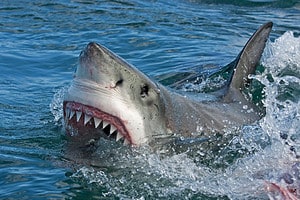The state of Virginia has always had very diverse wildlife. With a total of 737 vertebrates, this place has served as a suitable habitat for many animal species. Mammals, reptiles, amphibians, birds, and even fish, you name it— this place has almost everything.
Because of its vast number of species, especially fish, many people have developed an interest in angling, which is what others call a fishing sport. If you have created an interest in angling, then the state of Virginia might be the perfect place for you. With over 176,000 acres of public lakes and about 27,300 miles of fishable streams, ponds, small lakes, and reservoirs, this place is home to many freshwater and saltwater fishing opportunities that provide almost everything a fishing enthusiast wants.
Virginia’s 210 fish species are just proof of why this place can offer great opportunities for those who are lovers of fishing sports. Yet, among the 210, there are undeniably large species of fish that some anglers usually watch out for. Today, we’ll learn about the four biggest fish species, their diet, habitat, and unique capabilities.
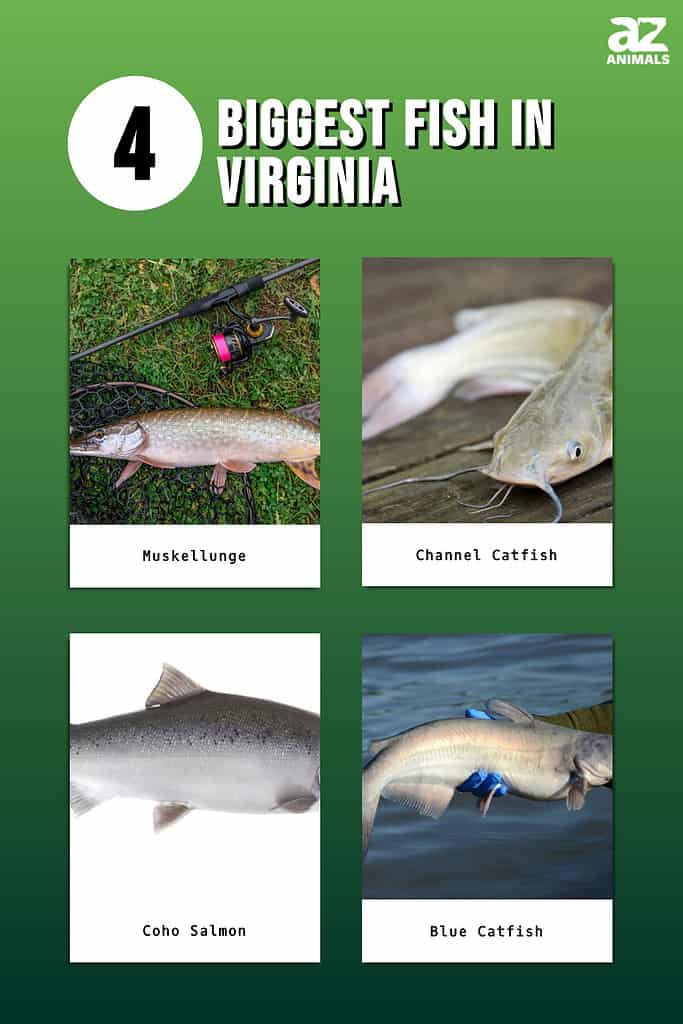
1. Muskellunge
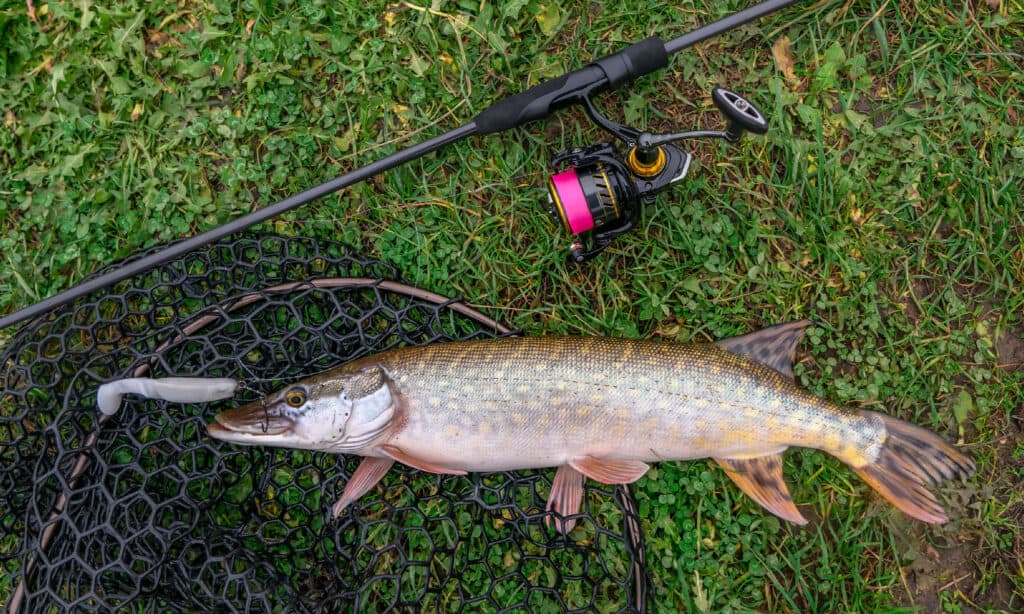
Muskies like to live in areas in which there is thick aquatic vegetation or submerged underwater structures.
©iStock.com/FedBul
| Muskellunge | Details |
|---|---|
| Scientific name | Esox masquinongy |
| Length | Up to 6 feet |
| Diet | Suckers, ciscoes, bullheads, carp, minnows |
Also known as “musky,” “muskie,” or “muskies,” muskellunge are large predatory fish that are also the most elusive sportfish in the state of Virginia. These underwater predators can grow up to 6 feet in length and prefer habitats with clear and cool waters. They also like to live in areas in which there is thick aquatic vegetation or submerged underwater structures. Since they are native to the north, muskies can’t handle warm water temperatures very well and will stop feeding if the water gets to 84 degrees. Muskies will try to find a cooler type of water to reside in every summer.
Muskies are ambush predators, biting their prey swiftly and swallowing their heads first. They are the top predators in any body of water and can eat larger prey, unlike other freshwater fish. They eat any variety of fish possible and sometimes resort to cannibalism by eating their kind when there isn’t enough food to hunt. They also have incredibly large stomachs, which can take up to two-thirds of their total body length. Muskie populations are relatively high in the James River and the New River, with moderate numbers in the Shenandoah River, Burke Lake, and Byllesby Reservoir.
2. Channel Catfish
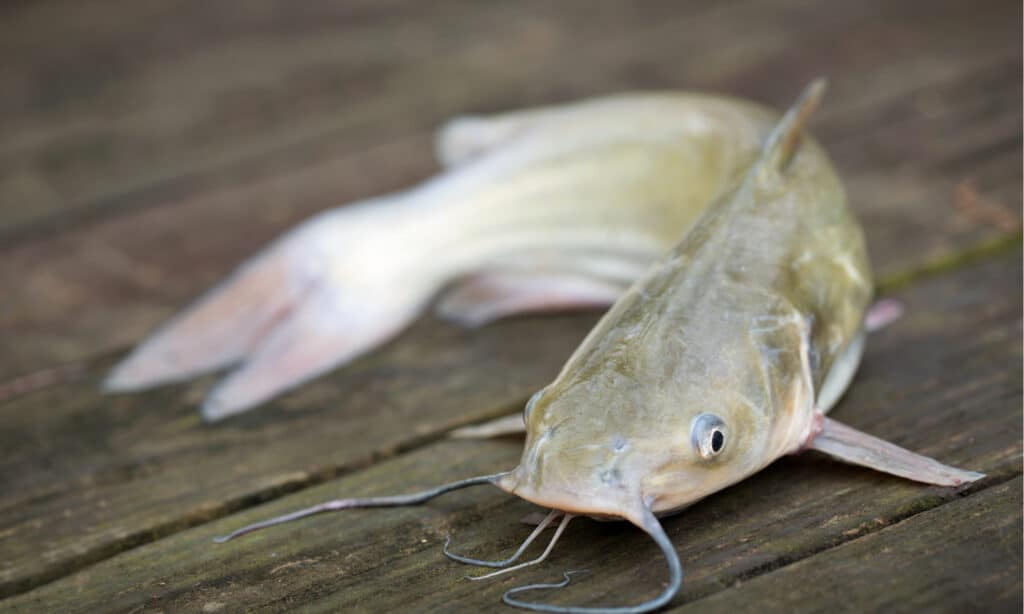
Channel catfish eat a wide variety of foods, including insects, crustaceans, mollusks, snakes, snails, fish, and even small birds.
©Jennifer White Maxwell/Shutterstock.com
| Channel Catfish | Details |
|---|---|
| Scientific name | Ictalurus punctatus |
| Length | Up to 4 feet |
| Diet | Insects, mollusks, crustaceans, small birds |
One of the most popular recreational catches by anglers is the smooth-skinned channel catfish. These fish have poor eyesight, using their sensory barbels to navigate the water and hunt for prey. Channel catfish are bottom-dwellers but can also adapt to living in freshwater, saltwater, or brackish water areas. They prefer to live in deep, slow-moving waters and channels with a clean bottom. They are primarily found in ponds, lakes, reservoirs, streams, creeks, and rivers.
Channel catfish eat a wide variety of foods, including insects, crustaceans, mollusks, snakes, snails, fish, and even small birds. Young channel catfish are omnivorous creatures, as they feed themselves with a balanced variety of small animals and plants. One of the unique features of channel catfish is that they hunt through taste buds throughout their body. These taste buds allow them to “taste” their surroundings to detect and track prey effectively. Larger fish species can also prey on channel catfish, and young ones can be preyed upon by fish-eating birds such as ospreys and bald eagles. Their eggs are also an easy food source for many animals.
3. Coho Salmon
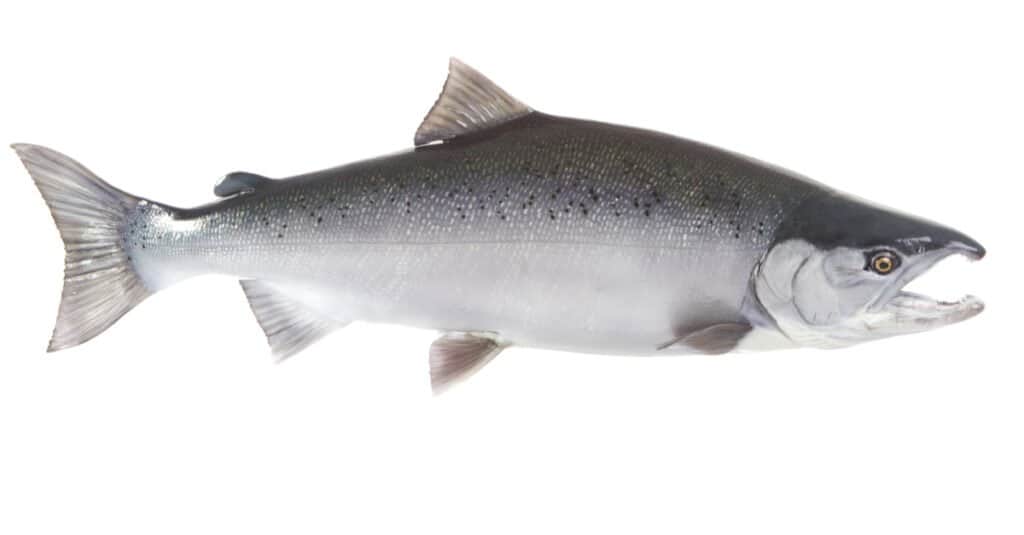
Coho salmon live in different habitats and can adapt well to different water environments.
©Keith Publicover/Shutterstock.com
| Coho Salmon | Details |
|---|---|
| Scientific name | Oncorhynchus kisutch |
| Length | Up to 3 feet |
| Diet | Plankton, insects, small fish, insect larvae |
These anadromous species are also the favorite targets of most anglers. Coho salmon have an appearance that depends on whether they are bred or not. Before they begin to spawn, they have silver-colored scales and darker coloration on their backs. During or after they spawn, their jaws become hooked and long, and their coloration changes to reddish-orange or pink. Young coho salmon hatch in freshwater areas and move to the ocean as they mature. They spend their entire lives there as adults and only move back to freshwater to spawn and die.
Coho salmon live in different habitats and can adapt well to different water environments. They are also carnivorous creatures that chase their prey to hunt them down, as they can jump vertically up to 6 feet when navigating fast and rapid waters. Their diet is based on age, as larger coho salmon can prey on more prominent species. Young coho salmon hunt for small fish and insect larvae, while adults that migrate to the ocean can primarily feed on fish and squid.
4. Blue Catfish
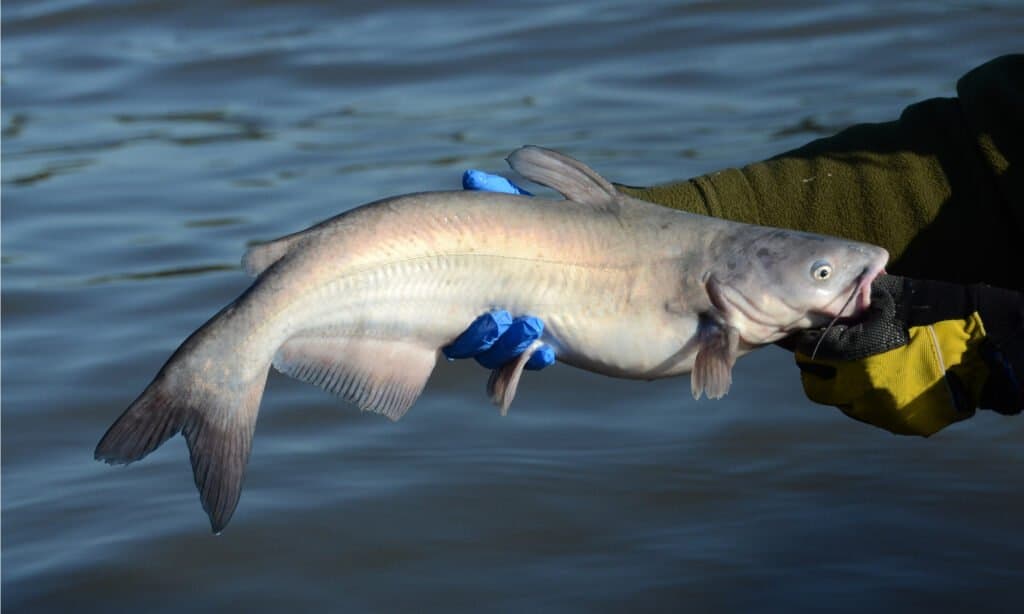
Blue catfish are omnivorous but feed naturally on other fish, crayfish, mollusks, crustaceans, and insects.
©M Huston/Shutterstock.com
| Blue Catfish | Details |
|---|---|
| Scientific name | Ictalurus furcatus |
| Length | Up to 5 feet |
| Diet | Fish, crayfish, mollusks, crustaceans |
Blue catfish are large-river fish that mainly live in channels, tributaries, and impoundments of some significant river systems. They tend to move habitats during the summer in search of waters with cooler temperatures and also find warmer water during the winter so they can thrive. These are the cousins of the large flathead catfish and are among the largest catfish species in America.
Blue catfish are omnivorous but feed naturally on other fish, crayfish, mollusks, crustaceans, and insects, and they even scavenge on dead aquatic and terrestrial animals. These catfish are native to the Mississippi, Missouri, Rio Grande, and Ohio river basins. Still, they are naturally introduced and almost present in every body of water in many states. Many anglers have been targeting this fish as they are strong and provide a good challenge that makes a good catch. They prefer to live in large rivers, deep water habitats, and free-flowing currents and also enjoy staying in areas with a sandy bottom to rest or wait for their next prey. Although they are now called invasive species as they eat native fish and can cause a lot of potential harm to many water systems, blue catfish are also edible and can be a good source of nutrition.
Summary of the 4 Biggest Fish in Virginia
| Number | Fish | Size |
|---|---|---|
| 1 | Muskellunge | Up to 6 feet |
| 2 | Channel Catfish | Up to 4 feet |
| 3 | Coho Salmon | Up to 3 feet |
| 4 | Blue Catfish | Up to 5 feet |
The photo featured at the top of this post is © Brandy McKnight/Shutterstock.com
Thank you for reading! Have some feedback for us? Contact the AZ Animals editorial team.




